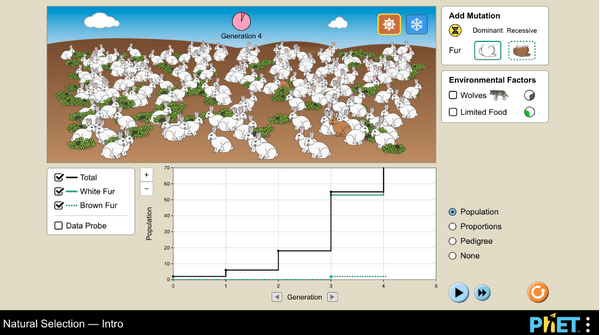Biology Teacher David Madden describes his series of lessons and activities was built to lead up to the Pivot Interactives activity: Natural Selection PhET Lab to teach students about natural selection at the start of our evolution unit.
Day 1: Field Museum’s: The Case for Darwin’s Finches. Stations 1, 2, 4.
This is a lab I’ve been using since I was a teacher back in Chicago. I brought my AP Biology classes to the Field Museum to view their temporary Charles Darwin exhibit. This activity offers students a fairly tangible experience of natural selection via measuring, graphing, characterizing, and interpreting. Students can either travel from station to station, or run each station from their own desks. This year I used a stationary (non-rotating) option. If you are able, a color print out works best. I wasn’t able to do that this year, so I made a colored slide and kept it projected on the board. Turns out students get to learn a little bit about birds in general as they learn about evolution specifically. We moved through stations 1,2, and 4. (Station 3 would become its own stand alone station and activity.) The level of the lab is approachable certainly for all high school students (and maybe a little easy for AP students). Nevertheless, it’s rather old school in that students are graphing and measuring skulls, and analyzing DNA segments. I’ve found that the pencil and paper-ability of this lab is a fun way to start of this series of lessons.
Students came away with a tangible understanding of variation – specifically – how is it that organisms can be different from each other. Using birds and their beaks as the sources of observation and measurement, students developed a first-hand understanding of what real scientists in the field might be doing as part of their evolution research.
Day 2: Bird Beaks and Food Lab Table (a remodeled Station 3).
We ran a Form bellringer to start the day. The objective was to access a bit of their learning from day one, and get them primed and thinking about our day two procedures. Here is the link to that Form. You can modify it to suit your class needs.
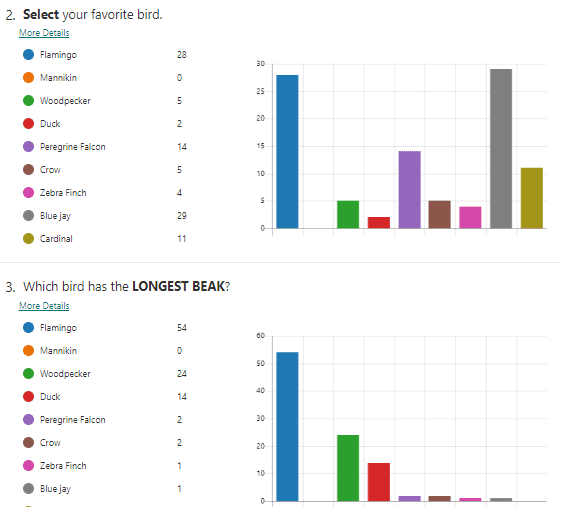
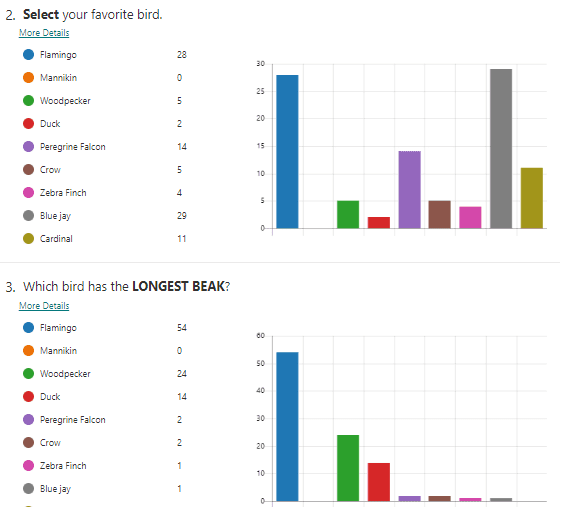

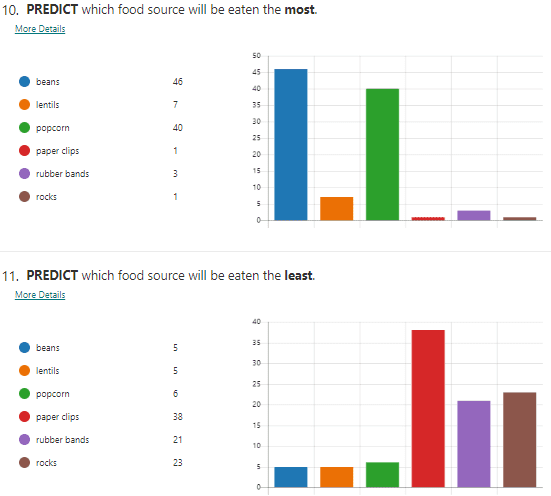
Day two had students spending extra time on an expanded version of the Field Museum’s: The Case for Darwin’s Finches station 3. I wrote up the lab separately so that it could be geared towards my current level of students, our available gear, available time, and expected goals. In this activity students were able to connect different variations to different ecological functions (what food they can consume) as well as fitness within a system. This also demonstrated the idea that fitness is contextual on the environment. In some environments one variation may have a selective advantage, while it may be at a disadvantage in another.
Day 3: Bird Beaks and Food on Carpet (or other new surface).
Day three had the students returning to the Beaks and Food lab, this time on carpet rather than the regular lab table surface. Old carpet or rug pieces (or perhaps field turf piece) would work well, too.
Students moved through 4 rotations and 6 table stations collecting more data. When they finished I had them add their group data to our class excel spreadsheet. This was our first-time collecting class data en masse. I then showed them the different ways to sum and average and do simple tasks in excel. From their students were asked to reevaluate questions about tool usage and the comparisons to bird beaks and natural selection.
Students were able to use data to defend claims about fitness and then make predictions about what individuals will be able to survive and pass on their traits (beak structure) to the next generation. In changing the model environment they also got to see how the environment changed the ability to survive (as measured by amount of food collected). This allows for a segway into population change over generations in the next activity using Pivot Interactives.
Day 4: Pivot Interactives: Natural Selection PhET Lab
On the final day of this lab cycle students dove into the Pivot Interactives activity on natural selection. This lab is a combination of Pivot and PhET – two of the most creative and forward-thinking leaders in science education. I had used the PhET simulation in the past with my students with a paper handout and it was always helpful. What Pivot has done is what Pivot always does – they’ve made the lab approachable, well-paced, and appropriately scaffolded on the digital platform. This science mashup is great for both the students and teachers.
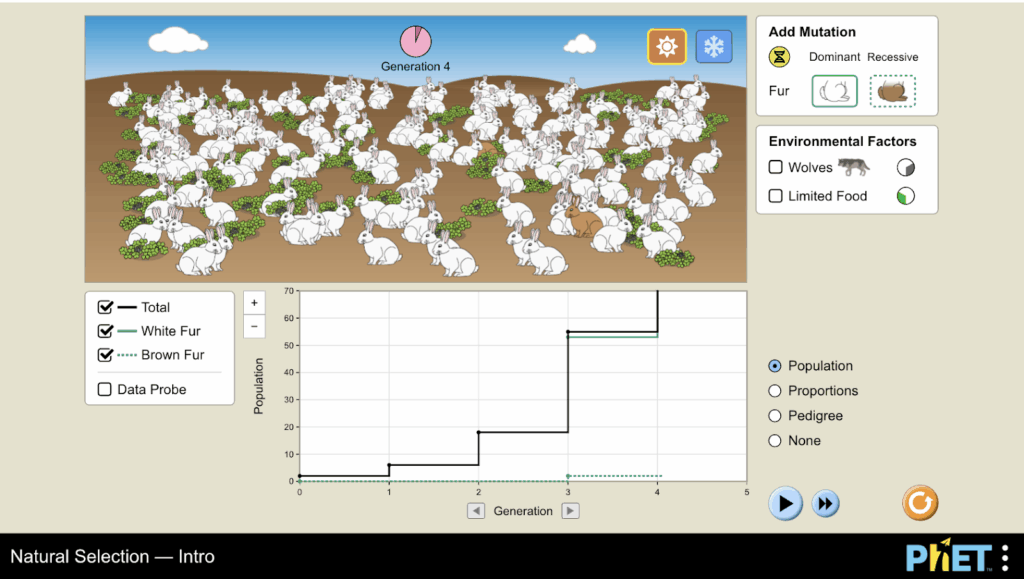

This activity worked well towards the start of our evolution unit and focuses on the interaction of variations in the ecosystem and how that results in generational population change. It is difficult to model the time scale change in the classroom. This activity allowed my students to apply the ideas in the birds and beak activity: that some traits are more advantageous in some contexts and worse in others, and see how that changes the frequency of those traits over time.
The students collected phenotypic frequency of the bunny populations in different environments to see how that changes over time. Building a graph around the data allows students to make a strong connection to the population change.
The Pivot/PhET Natural Selection Lab was the perfect way for my students to build a model of evolution by natural selection, which then allows us to go into additional evolution topics.
